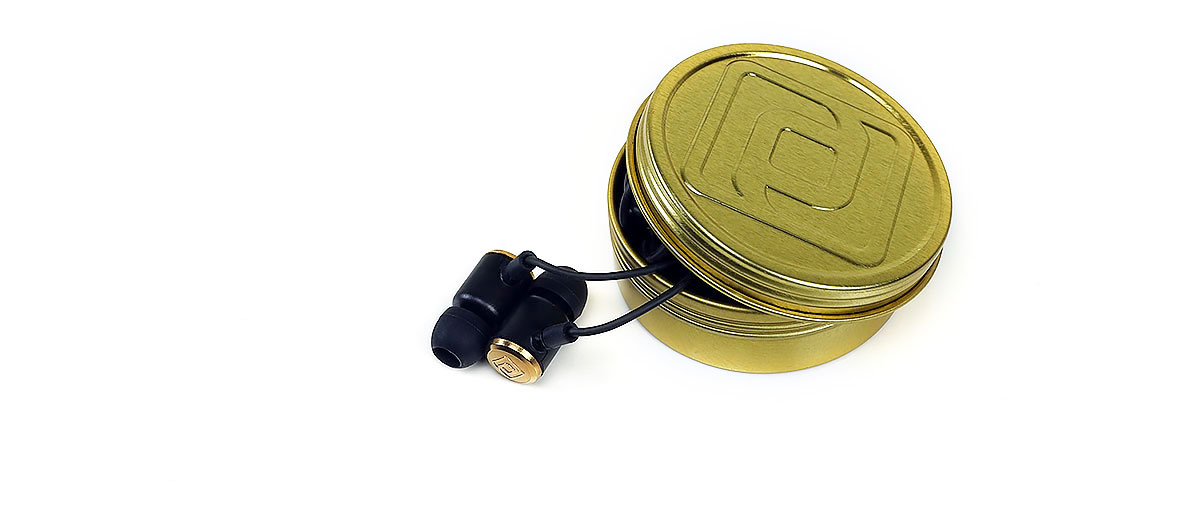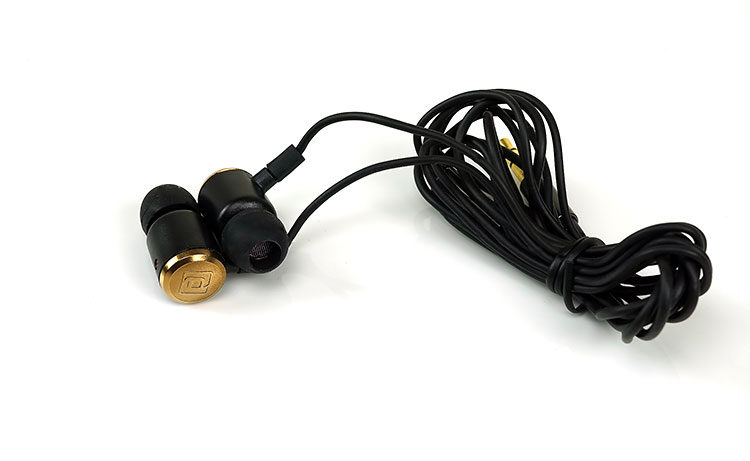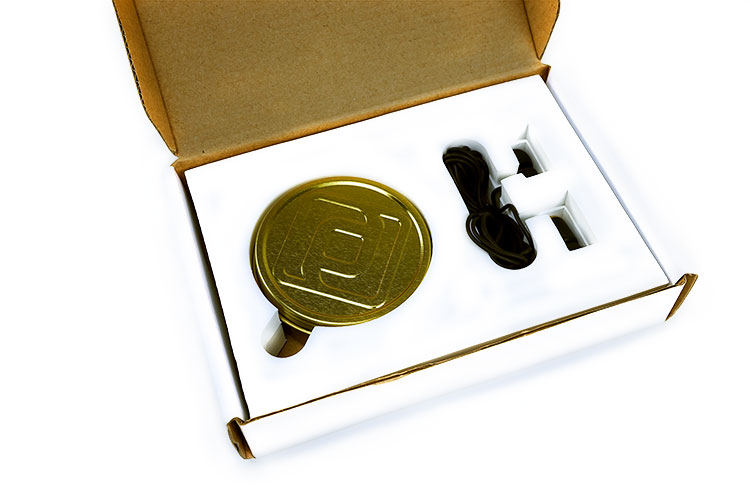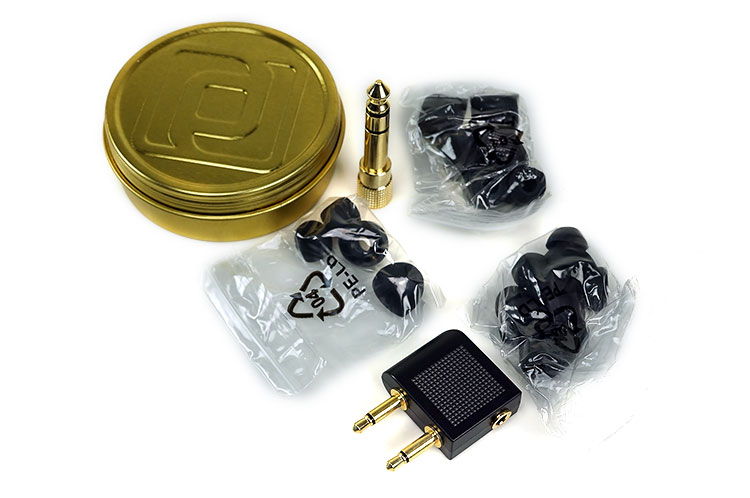Periodic Audio launch their elements series of IEMs ranging from the $99 Mg, $199 Ti to the top of the line $299 beryllium Be.
Disclaimer: The Periodic Audio Carbon sent to us is a sample in exchange for our honest opinion. We thank the team at Periodic Audio for giving us this opportunity.
To read more about Periodic Audio products we have previously reviewed on Headfonics, click here.
Note, this review follows our new scoring guidelines for 2020 which you can read up on here.
It was only last year that the men in white coats started to show up at the audio trade shows. Periodic Audio started in June 2016 but the guys putting in the hard hours and walking those trade show floors have a ton of experience behind them that belies the youthful tenure of the company itself.
Guys like Dan Wiggins, the Founder of Periodic Audio has worked with some huge names in Audio such as Microsoft and their gaming headset range, co-founder Doppler Labs as well as a ranking engineer at Sonus and Blue Microphones. he was also the CTO of Starke Sound just before starting up Periodic Audio.
In fact, the entire team is cited as having a combined 140 years of audio engineering and design experience between them on their own website. So unless they have 140 plus people at the HQ with 1 year of experience each that should be impressive enough credentials to take to the Headphone & IEM market, especially with an ambitious triple launch of 3 IEMs called the Mg, Ti and Be.
What Is The Pitch?
Philosophy
The pitch is beyond simply 3 IEM’s at 3 different price points. In a previous consulting life we had to dig deep to find the data we needed and if you dig deep you will find Dan’s philosophy about products and product marketing all over these IEMs.
The conceptualization and use of the periodic table to signify the elements being used in the driver technology of each IEM is unique. It is simple yet very effective right down to the trade show white coats.
Branding Everyone Knows
Everything takes me back to idle days in chemistry class trying to melt my pen on a bunsen burner whilst trying to memorize at least the top row of the periodic table. Even the bordering on the branding and symbolic upper case lower case lettering is a trip down memory lane. It is a type of symbolism that all high school and college kids would subconsciously relate to.
And yet the Periodic brand and design approach is pitched by Dan as almost anti-consumer or more accurately anti-fad. They developed the range firstly as something they themselves would like to use on an everyday basis.
They mentioned the 30 and 40 something group not swayed by the latest trends. That’s me, maybe not you. My traffic stats say it is likely to appeal to you but you may be in deep denial.
Periodic Audio Product Range
So what do we have? Essentially 3 single dynamic driver classic bullet type designed IEMs. Each is priced and tuned differently to appeal to different tastes and budgets and each uses a very different type of driver. All of this is packaged in a basic but very coherent packaging to encapsulate Dan’s professional but minimalist approach to the market.
We have the entry-level Magnesium driver or Mg IEM at $99. This is then followed by the Ti or Titanium IEM at a mid-price point of $199. Then finally we have the top-of-the-line Be or Beryllium driver IEM at $299.
Design
Periodic have been quite clever in both the packaging and build of their IEMs. All have a running theme so packaging is very similar in substance with only a tweak here and there for the specific branding of each.
This is the same cost-saving approach also for the actual build of each IEM with only the rear metal plate on each differing (or not as in the case of the Mg and Ti). So when I speak about one IEM external build I speak about them all, to be honest.
The form factor is old school but the bullet type design is a tried and tested design that does work quite well. This is a staple of IEM manufacturing for years because of its easy molding process, excellent acoustic dimensions, and relatively unobtrusive fit. It does place a bit more emphasis on the quality of tips for comfort and seal but tips these days are getting rather good at that.
Common Features
All the IEMs are built with poly-carbonate matte black colored bodies for additional robustness and to reduce resonance as much as possible.
Each IEM also features similarly positioned custom front-and-rear vents for tuned volume control. The vents are ringed in matching colors to each IEMs metal injected molded logo cap. All 3 IEMs are terminated with butyl finished rubber strain reliefs, and the insides of all 3 have N48H grade magnets.
Differing Diaphragm Materials
Where they differ from each other is in the driver materials and construction and these have a noticeable effect on the individual tuning of each IEM. The elements-based marketing is really focused on this aspect of the build of each IEM.
Mg
For the Mg, Periodic Audio uses a high magnesium content alloy (96%) for the diaphragm material. This is the lightest diaphragm of the 3 IEMs and should have good damping.
Ti
With the Ti, Periodic Audio chose a pure titanium foil for the diaphragm material. Titanium is a lot stiffer than either Be and Mg and is a popular material for companies like Beyer for their T series. It is noted for its general snappy response and clean tones.
Be
The TOTL Be IEM uses an almost 100% pure beryllium foil diaphragm with a bonded PEEK surround. The actual numbers are 98.5% pure, with the balance trace elements being primarily O, Fe, Cr, and Si (Oxygen, Iron, Chromium, and Silicon).
That percentage breakdown is about as pure beryllium build you can hope for and it lays waste to any thoughts of this being just another coated mylar diaphragm. Generally speaking, out of the three materials applied, the more expensive beryllium will produce the purest sound signature with the best level of control.
Cable
All 3 IEMs use non-detachable 1.4m rubber-coated 4-core cables with butyl strain relief at both ends of the cable. The cables are terminated with 3.5mm gold plated straight stereo jacks with no in-line remote control or mic modules making all 3 IEMs purposed purely for audio listening purposes.
Non-Detachable
Periodic have stated that detachable, for now anyway, was the best fit for purpose design and felt that 2-pin would have made the housing too big. they also believe MMCX is not the ideal connector given their finite lifespan in terms of the connectors.
There were also some engineering concerns on the MMCX’s and how they interfered with the sound they wanted so that’s another reason why they are out.
I do believe there may be a detachable version on its way at some point, though no schedule has been given. So, for cable swappers, there is no dice as of writing. You will have to work with what is supplied which I presume is a copper or SPC variant.
Left & Right
Left and right identification on the cables is not the norm as far as I can see. There is no L or R on the stems and the cable colors are the same.
You have to peer into the nozzle to see differing colors blue and red to make out which is left and right (right being red). I believe a new cable coming out will have better markings for left and right for those who find this process slightly awkward.
Microphonics
Microphonics is a mixed bag on all the IEMs. If worn straight down you will get some microphonics, particularly above the Y-split and closer to the stem of the driver housing.
Wearing them over the ear cancels out a lot of the casual microphonics from moving around but you will get a little form generally “swishing the cables around”. My advice is to wear them over the ear as it is much quieter than straight down.
Memory
There is a little bit of memory retention in the cables, they don’t naturally “flop out” retaining a few kinks here and there but a little stretch and run down with your fingers irons out those issues pretty quickly.
Comfort & Seal
Bullet-type designs are relatively easy to work with because of their largely unobtrusive design they will not hit sensitive areas on your outer ear.
All 3 IEMs in that respect are relatively lightweight also so they won’t add any unnecessary downward pressure towards your lobes and will stay firmly in place. Wearing them over the ear will give you a more secure fit as well as reduce those microphonics.
Tips
Periodic Audio has supplied a similar set of tips with each IEM package. You get a set of silicone dual flanges in small, medium, and large as well as a single bore in similar sizes. You also get a set of foams in small, medium, and large.
Isolation Levels
The dual-port venting system will take away a little from the overall seal so it is not custom BA tight but pretty good. The single-bore silicone tips seal the least at 26dB, with 29dB for the dual flange and up to 31dB for the foams.
Best Choices
The foams will give you the best in terms of isolation from background noises but the dual flanges scored pretty well for me also and I found them a little more comfortable in the long run. The only issue I have with the dual flange tips is that the seal could get broken a little easier than foams if I twisted the housing a little in my ear.
Aftermarket Tips sizing
For those that want to try their own tips, the Periodic Audio IEM range will work with Comply T400 and T500 sizes as well as SpinFit CP100 sizing. Symbio W hybrid tips will also work quite nicely.
Accessories & Packaging
All simple but effective stuff really. Each white cardboard box is the same in terms of branding appeal and design with only the Mg, Ti, and Be lettering to mark out the difference.
Inside you get the exact same accessories and carry case which is reminiscent of one of those old-style Copenhagen snuff boxes from yonder years. It’s tight, compact, and will just about fit in the tips and IEMs but it will fit very nicely into a jacket pocket.
Beyond that, each box will also contain a single quarter jack adapter, your silicone single, dual flange and foam tips, and an airline adapter. Both jacks are gold-plated finished.
Click On Page 2 below for Sound Impressions & Comparisons










